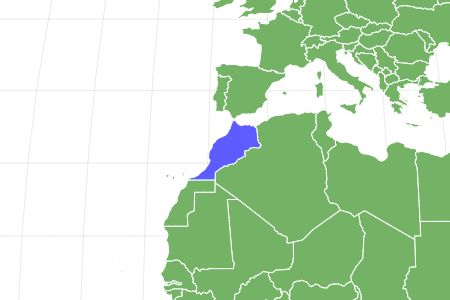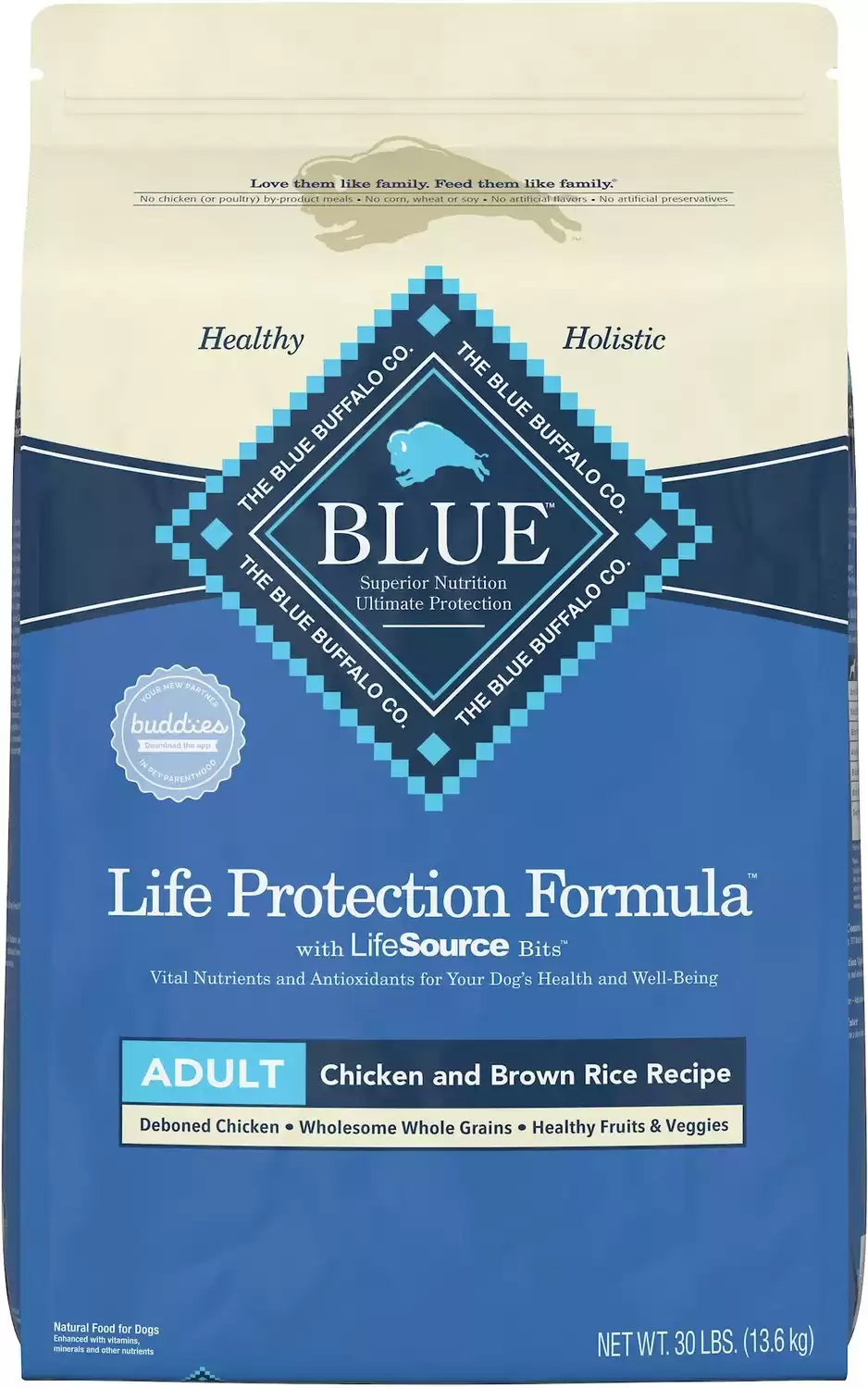Aidi
Canis lupus
The Aidi's cheerful personality and relaxed temperament are just two reasons why this dog is a good choice for families with kids.
Advertisement
Aidi Scientific Classification
- Kingdom
- Animalia
- Phylum
- Chordata
- Class
- Mammalia
- Order
- Carnivora
- Family
- Canidae
- Genus
- Canis
- Scientific Name
- Canis lupus
Read our Complete Guide to Classification of Animals.
Aidi Conservation Status
Aidi Facts
- Name Of Young
- Puppy
- Fun Fact
- The Aidi's cheerful personality and relaxed temperament are just two reasons why this dog is a good choice for families with kids.
- Other Name(s)
- Atlas Mountain Dog, Atlas Shepherd Dog, Berber Dog, Chien de l'Atlas, and Chien de montagne de l'Atlas
- Temperament
- Protective and playful
- Litter Size
- 5-8 puppies
Aidi as a Pet:
- General Health
- Energy Level
- Shedability
- Trainability
- Intelligence
- Tendency to Chew
- Size
- Family and kid friendliness
- Yappiness / Barking
- Moderate
- Separation Anxiety
- Moderate
- Preferred Temperature
- Warm climate
- Exercise Needs
- Moderate
- Friendly With Other Dogs
- High
- Pure bred cost to own
- $800
- Dog group
- Herding
- Male weight
- - lbs
- Female weight
- - lbs
This post may contain affiliate links to our partners like Chewy, Amazon, and others. Purchasing through these helps us further the A-Z Animals mission to educate about the world's species.
Aidi dogs are rarely seen in other regions outside of their native North Africa.
The Aidi, which originates from Morocco in North Africa, is an expert at protecting herds of sheep and other livestock from jackals and other predators. It is also used on hunting trips due to its excellent sense of smell. Affectionate, playful, and protective all describe this breed of dog. Socialized Aidi dogs are compatible with kids and other pets in a family.
See all of our expert product reviews.
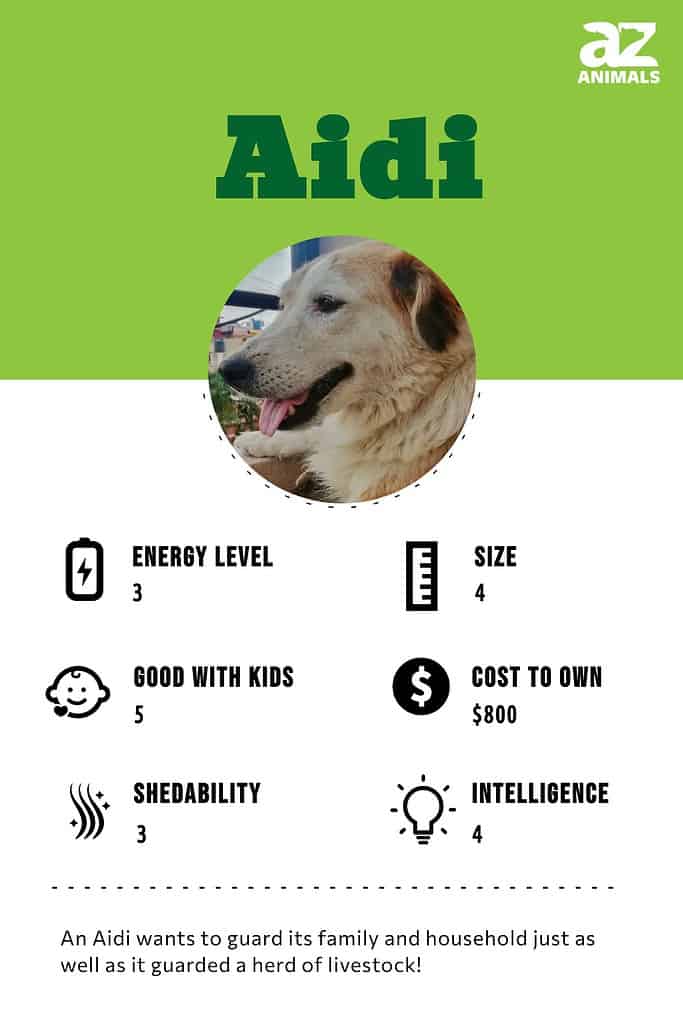
3 Pros and Cons of Owning an Aidi
| Pros! | Cons! |
|---|---|
| Always On Watch Duty: These dogs were bred for guarding livestock, which makes them expert watchdogs for a family. | Very Active: This breed needs physical exercise every day. These pets require 30 to 60 minutes of games and activity daily to stay healthy. But for some families this may be a plus! |
| Gentle With Kids: Its affectionate temperament helps it to get along well with children. | Needs Ample Space: This dog is not a good choice for an owner residing in an apartment or somewhere without a yard. They need space to move around freely. |
| Only Need Occasional Baths: This dog’s coat was meant to repel moisture and endure all types of harsh weather. So, it only needs a bath every few months to keep its coat clean. | A Challenge to Find: One of the facts to keep in mind about this breed is it’s somewhat rare to find outside of Morocco. Though there are some Aidi breeders in the United States. |

Originally bred for herding, an Aidi makes a great watchdog.
©Akashskysmokie/Shutterstock.com
Evolution and Origins
While the exact origins of the Aldi are under dispute, many believe it was first present in the Atlas Mountains of Morocco, Tunisia, and Algeria. This is reflected in other names for this breed: Atlas Mountain Dog, Atlas Shepherd Dog, Chien de l’Atlas, and Chien de montagne de l’Atlas. It’s also called the Berber Dog, after the nomadic Berber population of the region.
Others feel that the Aidi originally came from the Eastern Mediterranean coast and were brought to other countries by the Phoenicians, who developed and traded the dogs.
Used as a guard dog for the people living in mountainous areas and their herds of livestock, this breed is thought to never have been used as a traditional flock herding dog. The most alert and aggressive dogs were positioned around the camps as watchdogs at night to defend against predators and strangers. They were also used to hunt animals and frequently paired with the Sloughi sighthound, which would chase down the prey after the Aidi had tracked it by scent.
Health and Entertainment for your Aidi
See all of our expert product reviews.
The fuzzy, thick coat of an Aidi makes it easy to believe this dog is closely related to the Great Pyrenees breed. Others think the Aidi developed by crossbreeding the Spanish Mastiff and Portuguese Mastiff. It remains common and popular in Morocco, Tunisia, and Algeria, and is rarely seen outside of these countries.

It’s believed that the Aidi originated in the Atlas Mountains.
©iStock.com/Svetla Ilieva
Size and Weight
This breed of dog is medium in size with a coat of long, thick hair. Male and female Aidi dogs grow to be about the same size as adults: a height of 24 inches from head to toe and a weight of 55 pounds. An eight-week-old puppy weighs nine to ten pounds. Aidis reach adulthood at around 18 months.
| Height (Male): | 24 inches |
| Height (Female): | 24 inches |
| Weight (Male): | 55 pounds |
| Weight (Female): | 55 pounds |
Common Health Issues
The Aidi is prone to a few health issues. One of them is hip dysplasia, a condition that is especially common in dogs bred for guarding and herding animals, including German Shepherds, Old English Sheepdogs, Saint Bernards, and Neopolitan Mastiffs. A dog with hip dysplasia has a hip joint that doesn’t fit together properly. The treatments include weight management, physical therapy, and sometimes surgery.
Elbow dysplasia is another health issue of this active breed of dog. This is a hereditary malformation of the dog’s elbow. Some cases of elbow dysplasia are mild, while others are severe and can cause a lot of pain when the dog walks, trots, or runs. Therapy, medication, and surgery are all treatments.
This breed can have an eye health issue known as cataracts. Cataracts can affect older dogs and appear as cloudiness in the eyes. Severe cataracts can result in vision loss. Surgery can be a remedy for this issue, but many dogs live with cataracts for years.
In summary, common health issues of the Aidi are:
- Hip dysplasia
- Elbow dysplasia
- Cataracts.

Like other breeds such as the Old English sheepdog, the Aidi is prone to hip dysplasia.
©DesignTop/Shutterstock.com
Temperament and Behavior
The cheerful personality and relaxed behavior of Aidi dogs are just a couple of the reasons why they are a good choice for families with kids.
One of the main facts to remember about this dog is its need for physical activity every day. Since most families won’t use this dog in its traditional, active role, it needs to find physical and mental stimulation in other places. Taking daily walks, jogs, or runs and playing games with this dog all play an important part in maintaining its health. Having another dog or two in the family is another good way to make sure this breed gets exercise running and playing each day.
One of this dog’s most positive traits is its protective nature. This canine wants to guard its family and household just as well as it guards a herd of livestock!

Having another dog in the family helps the Aidi get the daily playtime and exercise it needs.
©Erik Lam/Shutterstock.com
How to Take Care of an Aidi
Diet, grooming, training, and health considerations are all factors to study before taking in any new pet. A puppy and an adult dog need different types of care to keep them in excellent condition. Consider the unique factors involved in caring for each one.
The Best Dog Food for Aidi Dogs
The health of an adult Aidi and a puppy can benefit from the right diet. Look at the unique elements of each one’s daily intake of food.
Aidi puppy food: Lamb, chicken, and brown rice in a puppy’s diet are great sources of lean protein. These elements nourish the puppy’s muscles, cartilage, tissue, and joints. Protein is essential for a growing pup with a tendency to develop hip dysplasia. Carbohydrates are another must-have in this puppy’s diet. Carbohydrates supply it with energy for its vigorous activity. Its bones, teeth, and claws can grow healthily with the addition of calcium to its diet. Vitamin C is an antioxidant that helps the immune system fight respiratory issues and other ailments. Don’t forget the fiber in a puppy’s diet. This element gives it the ability to maintain good digestion.
Aidi adult dog food: To maintain the health of the muscles and joints of this active breed, it needs lean protein in its dog bowl. Fat is necessary to fuel daily walking, running, and exploring. Vitamin A and taurine help ward off cataracts in this breed. Dog food that contains carrots provides Vitamin A. Spinach in its dog food provides Vitamin C (among many other nutrients) that helps this breed’s immune system function at its best.
Because hip and elbow dysplasia is a concern for the active Aidi, be sure to feed this breed a diet rich in glucosamine and chondroitin.
With all this considered, at A-Z Animals we think your Aidi will thrive eating Blue Buffalo Life Protection Formula Natural Adult Dry Dog Food.
The glucosamine contributes to healthy joints and the taurine promotes eye health to keep Aidi dogs moving around carefree.
Check out Blue Buffalo Life Protection dog food on Chewy and Amazon.
- Essential, high-quality protein for healthy muscle development, and carbs for energy for an active life.
- Calcium, phosphorus and essential vitamins for strong bones and teeth.
- Glucosamine is added for joint health and mobility support.
- Vitamins, chelated minerals and antioxidants contribute to your pup's immune system health.
- No corn, wheat, soy or chicken (or poultry) by-product meals.
Maintenance and Grooming
The coat of this dog is designed to withstand the many types of weather it encounters while herding livestock. So, a family that takes an Aidi into its household is bringing in a breed with an easy grooming routine. Brushing its coat once every seven days is adequate for keeping it looking its best. A pin brush or boar’s bristle hairbrush is good for weekly grooming. Make sure to choose a pin brush with plastic coverings on the ends of its bristles. This is so it doesn’t scratch the dog’s skin.
An Aidi is known to seasonally shed hair. Generally, it sheds a minimal amount except when the seasons change. Then, the shedding (temporarily) increases. When the shedding of this pup increases, a slicker brush can be useful in removing that extra hair.
Avoid bathing this dog more than a few times each year unless necessary. Why? Because this washes away natural oils that nourish its coat and make its colors shine.
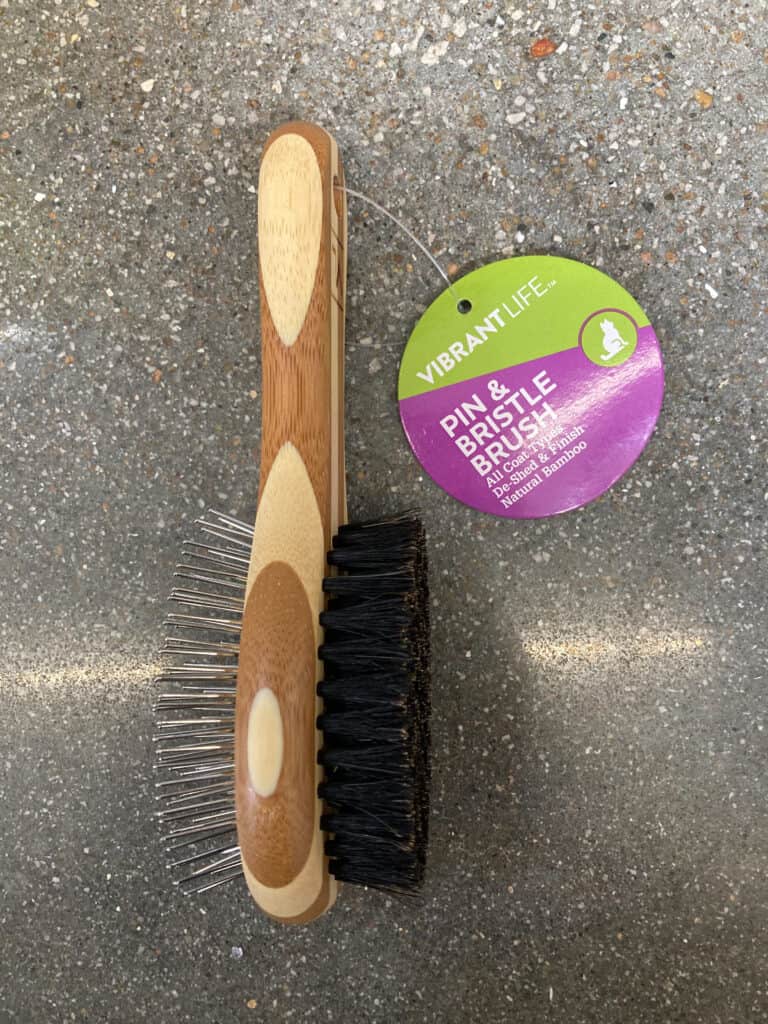
Training
A quick mind is one of this dog’s best characteristics. Consequently, training an Aidi to sit, stay, heel, etc. is an easy undertaking. One of those facts the owner of an Aidi would tell you is that these dogs are sensitive. This is why it is important to use words of encouragement and a lot of praise when it absorbs an obedience lesson.
The Great Pyrenees breed is another smart dog with a sensitive nature that’s easy to train with patience. This makes a lot of sense considering Great Pyrenees are relatives of the Aidi.
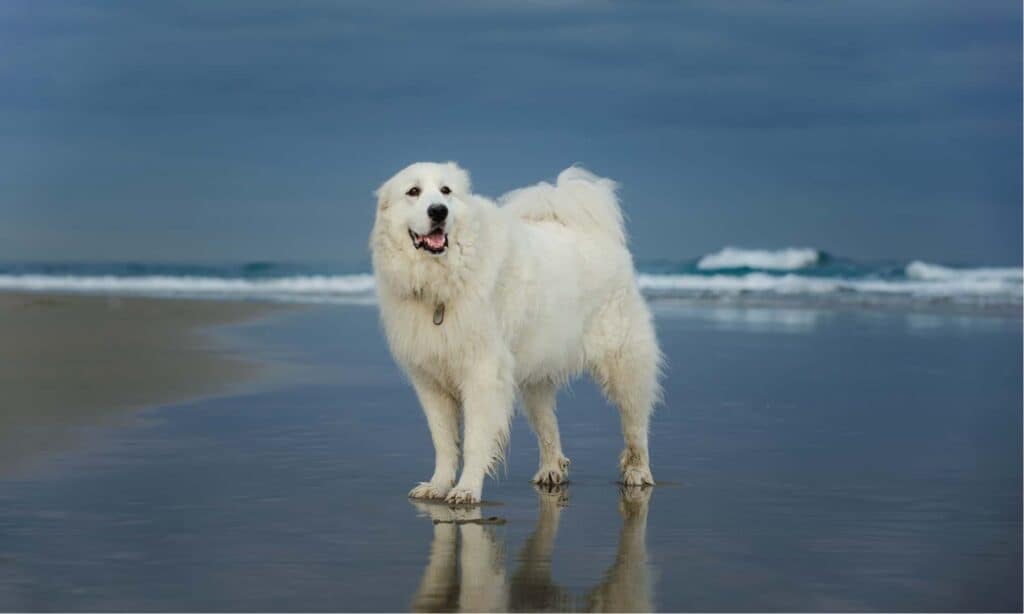
Like the Aidi, the Great Pyrenees is a sensitive dog that can be trained with patience and encouragement.
©everydoghasastory/Shutterstock.com
Exercise
For this breed, regular exercise is necessary for both its physical and mental health. It can also lengthen its lifespan. A family should set aside at least 30 minutes and closer to 60 minutes of daily activity for this pet to get all the physical and mental stimulation it requires.
Games of fetch, chase, and tug of war are all favorite activities of this dog. Visiting the dog park, running in a field, and walking off the leash in the woods are all activities that fulfill this dog’s need for exercise.
These dogs aren’t a good option for people who live in apartments, small homes, or other places with very little space.
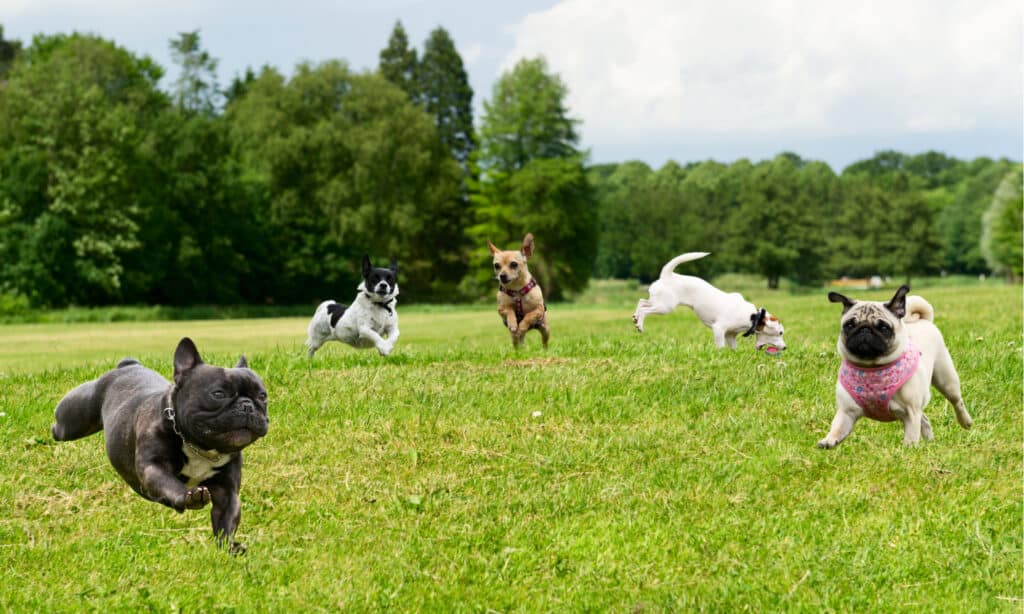
Visiting the dog park is a good way for an Aidi to get the physical stimulation it needs.
©Alis Leonte/Shutterstock.com
Puppies
Puppies of this breed need a large yard or other safe enclosed areas to start developing their muscles and getting the exercise they need.

Aidi puppies require an enclosed yard for safe exercise.
©Adwo/Shutterstock.com
Aidi and Children
Aidi dogs are compatible with families who have kids. Young kids should certainly be shown how to treat this pup (or any pup) with respect and kindness.
Dogs Similar to an Aidi
Dogs similar to the Aidi breed are the Great Pyrenees, the Australian Shepherd, and the Belgian Shepherd.
- Great Pyrenees: Both of these canines has a sweet, relaxed temperament. But this dog is bigger in weight and height.
- Australian Shepherd: This dog is similar in height and weight to an Aidi. However, its coat is found in fewer colors than an Aidi.
- Belgian Shepherd: These dogs are about the same in height and weight. They also share the same lifespan and have a lot of coat colors in common.
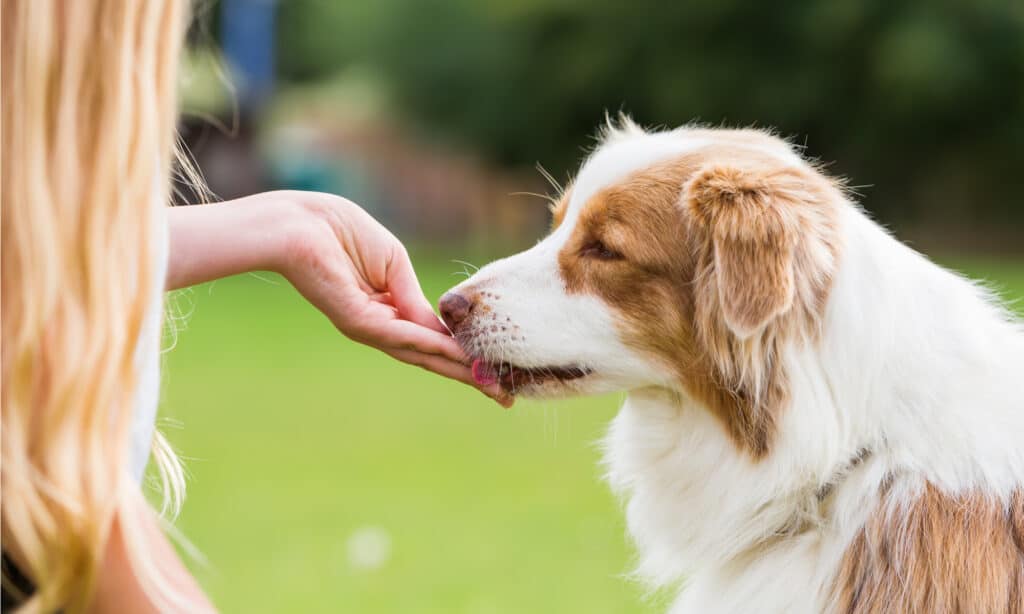
An Australian Shepherd dog is similar in height and weight to an Aidi.
©Christian Mueller/Shutterstock.com
Popular Names for Aidi Dogs
Popular names for this breed:
- Gyp
- Rex
- Patch
- Molly
- Flo
- Sandy
- Max
- Sue
Aidi FAQs (Frequently Asked Questions)
How much does an Aidi cost?
The cost of buying this dog from a breeder is around $800.
The yearly vet cost for this pet’s care is $400 to $700.
The food budget for an Aidi falls between $30 and $50 each month.
What is the Aidi’s purpose?
The characteristics of this breed fulfill its original purpose of guarding livestock. But that doesn’t mean those same characteristics aren’t welcome in a dog that joins a household with no livestock to protect.
Where is the Aidi from?
This breed originated in North Africa.
What is the connection between the Aidi and the Sloughi breed of dog?
The Sloughi is another popular breed of dog in Morocco. Many hunters pair the Sloughi with the Aidi. An Aidi’s sense of smell is excellent whereas its eyesight is about average. Alternatively, a Sloughi has great eyesight and average ability to track a scent. So, these dogs complement each other on a hunting trip in order to track down prey.
Is an Aidi good with kids?
Yes, it has a gentle temperament and is good with children.
How long does an Aidi live?
Its lifespan is 12 to 15 years.
Thank you for reading! Have some feedback for us? Contact the AZ Animals editorial team.
Sources
- Wikimedia, Available here: https://en.wikipedia.org/wiki/Aidi
- American Kennel Club, Available here: https://www.akc.org/dog-breeds/great-pyrenees/
- American College of Veterinary Surgeons, Available here: https://www.acvs.org/small-animal/canine-hip-dysplasia
- Animal Wellness, Available here: https://animalwellnessmagazine.com/best-foods-vision/

